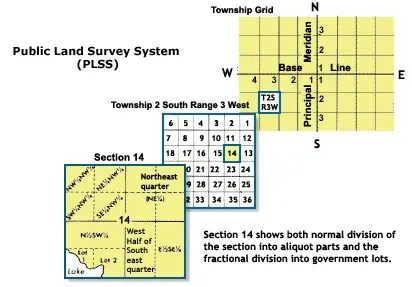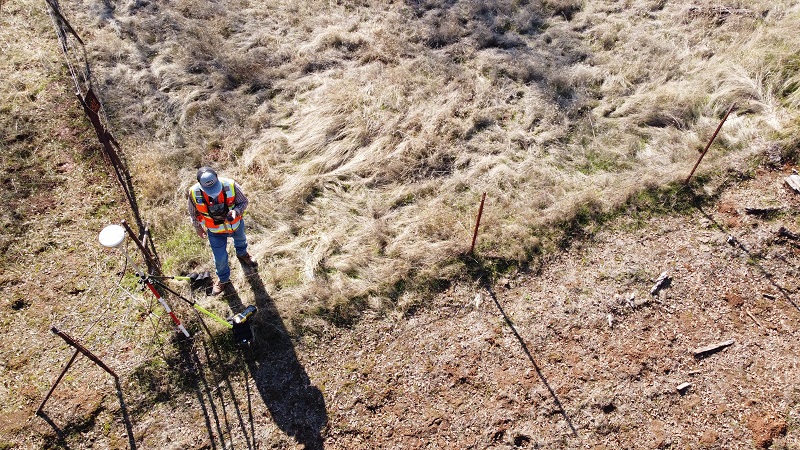
What’s the real estate legal description that goes on a deed? A real estate legal description for a deed is not made up of the glowing words in a real estate marketer’s flyer — as grand as that would be! It is not simply a street address, or a tax description copied from the home county’s website. None of these make a deed legally able to transfer a piece of real estate from one person to another.
A legal description is a precise, legally meaningful and binding summary of a property survey. You can find it on the existing deed — that is, the last deed used to transfer the property. The legal description may have a border around it, or it might be indented to make it easy to spot. Sometimes it appears on an attached exhibit, incorporated by reference on the face of the deed. The description on a mortgage agreement or title insurance commitment should match the legal description on the deed.
Whenever an interest in property is transferred from one party to another, the real estate legal description is representing the property exactly. It is proof to lenders that the property is just as it’s shown on the deed, to be valued accordingly. And it allows a future surveyor to precisely trace a property’s angles, corners and borderlines.
It’s a hard rule that deeds have to include the property’s complete legal description. Each county has specific requirements for how that description is made, but the point is to submit the right description for the deed being prepared. That might be all you really want to know!
But if you are curious about the main types of legal descriptions, and the components that form them, read on.
The Elements of a Legal Description of Property for a Deed

You’ll hear about metes and bounds, and also about lots and blocks. These are two different formats, the latter being a simpler representation of the same information. If you don’t hold the deed, you can check with the county recorder’s office to find out which is used.
The traditional description is based on a surveyor’s record of metes and bounds. Metes are borderlines. Bounds are the distances between them. The legal description starts with a landmark, which could be a point identified in the USGS Public Land Survey System. Starting from that recognizable feature or point of beginning, the description maps the property’s layout by a line that comes back around to the starting place.
For properties in cites and developments, the descriptions are briefer. Lot and block identifications refer to subdivision plats that contain the property descriptions. Surveyors create plats to map out the property’s boundaries and dimensions, taking note of natural and constructed markers.
Thus, properties in developments have book and page numbers showing the location of their plats. The legal description may identify the size, the lot(s), the block in which the lot exists, the county, state, and subdivision, and the original grant. It may contain a reference to a more complete description, in metes and bounds.
A legal description for a condo identifies the unit, and sets forth the elements described in the association’s master deed, including all amendments.
Fixing Mistakes in Real Estate Legal Descriptions

A mistake in the real estate legal description on (or attached to) a deed is a big deal. It means the deed itself is defective. This creates a cloud on the house title. Because accuracy is so important, proofread the legal description you supply for a deed. Check that the digits and every decimal point are all in place. Read and follow the line in a metes and bounds description. Does the description make geographical sense? Do the measurements come to their closing point where they began?
If the legal description doesn’t correctly trace the property line, or if it has directional errors or refers to the wrong lot, or some other substantive problem is present, a correction deed is necessary. Mistakes in legal descriptions impact taxation, appraisals, and loan approvals. Unless it has a full, error-free legal description, a deed should be corrected and recorded anew.
If a new description must be created, a professional surveyor stakes and maps out the property. Cautious buyers have stake surveys done before closing, to verify the actual boundaries — rather than assume fences are in all the right places.
When a correction deed is necessary, it will repeat and correct the information recorded on the problematic deed. It will include the full and correct legal description. Of course, it’s never OK to use a correction deed to add new owners to the deed, create new property interests, or change the deed’s substance beyond the correction at issue.
An erroneous deed should not simply be re-recorded together with a re-written real estate legal description. Generally, the same people who signed the faulty deed must also sign the corrective deed, and have their signing notarized. If a mistake is found after closing, it should be fixed promptly, while the transaction is fresh in everyone’s mind, and while everyone is available to participate. If a party to the problematic deed’s conveyance argues against the correction, the matter could wind up in court in a deed reformation case.
Correction deeds are handled through the submission of completed forms and filed in the public records. Each state has a set of legal rules for correction deeds. In some states — for example, Pennsylvania — each county within the state publishes a unique set of rules to follow.
Minor ambiguities can be more easily repaired, using a scrivener’s affidavit. This document gets attached to the deed to clarify ambiguous language in the legal description. It cannot be used to repair any error that would materially alter the property or its value.The scrivener’s affidavitalso has to meet all applicable rules set by the county and state, but it is not considered an actual correction to the prior deed.
☛ Need to correct a deed? Read more details on correction deeds and important rules for using them here.
Every Detail Matters
To be valid and to withstand potential challenges, deeds must be precise. Nowhere is that more critical than in the real estate legal description you supply for your deed.
Sometimes, in the rush to get a transaction done, a mistake is made. Title company employees encounter mistakes in legal descriptions often. These problems can hold up financing approvals, as well as sales and transfers of property. But with careful attention to detail, your deed will be clear, accurate, and include the proper legal description of the real estate involved.
If you have case-specific questions about a transaction, or anticipate a dispute over a real estate deed, consult with a real estate attorney in your state. Legal advice can only be provided in an attorney-client relationship.
Supporting References and Further Resources
Deeds.com: An Error in the Legal Description of the Deed: What Happens Now? (Feb. 2019).
Deeds.com: How Real Estate Legal Descriptions and Surveys Work Together (Aug. 2019).
Attorneys’ Title Guaranty Fund Underwriters’ Bulletin: Recording Problems: “Legal Description Attached” … Or Is It? (ATG Casenotes, Vol. 2, No. 12).
Photo credits: David McBee, via Pexels.com, and Scott Blake, via Unsplash. Public Land Survey System illustration: public domain.
